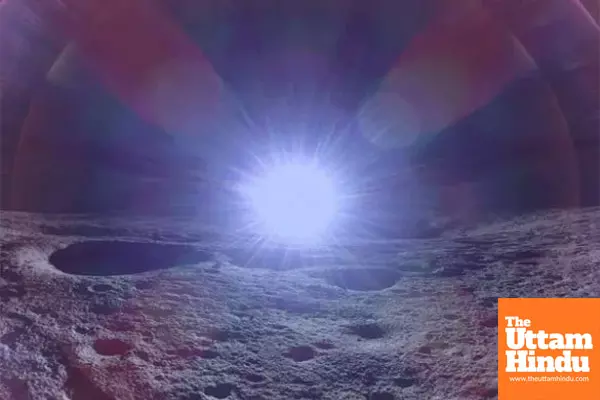
Chandrayaan-3 Mission Discovers Potential Water and Ice on the Moon

New Delhi (The Uttam Hindu): India's Chandrayaan-3 mission has achieved a remarkable breakthrough in lunar exploration by discovering possible deposits of water and ice on the moon's surface. This discovery, made through the Lunar Surface Thermal Physics Experiment (ChaSTE) conducted by the Vikram Lander, is a significant step forward for future lunar missions and potential human habitation.
According to K Durga Prasad, a scientist at the Indian Space Research Organisation's (ISRO) Physical Research Laboratory (PRL), the presence of water and ice on the moon is crucial for sustaining life and supporting long-term exploration. Prasad explained that the moon's temperature not only influences the presence of these vital resources but also has a profound impact on other scientific aspects of lunar exploration.
The discovery was published in the prestigious journal *Nature Communications Earth and Environment*, marking a milestone for Indian space research. The ChaSTE experiment revealed temperature variations on the moon's surface, with measurements reaching up to 355 K (82°C) in the south pole region. This temperature was found to be 25 K higher than previously estimated values. Scientists attribute this temperature increase to the Vikram Lander's tilt toward the sun at a local slope of 6°, which created localized temperature anomalies.
The research team, based on ChaSTE’s observations, believes that polar regions with slopes greater than 14° may harbor permanent reserves of water and ice. These regions, receiving less solar radiation, have cooler temperatures, making them more favorable for future missions and even potential human settlements on the moon.
The discovery has generated significant interest from space agencies across the globe, all eager to understand the potential uses of water and ice on the moon. This finding could pave the way for sustained human presence on the moon, as water is essential not only for drinking but also for fuel production and other critical needs.
ISRO has indicated that the data from the ChaSTE experiment will undergo further analysis, with more research papers expected to be published soon. This breakthrough offers new insights into the moon's resources and could significantly influence the future of lunar exploration and habitation.
- Chandrayaan3MoonMissionWaterOnMoonIceOnMoonLunarDiscoverySpaceExplorationISROChandrayaan3FindingsLunarSurfaceWaterMoleculesMoonResearchIceCrystalsScientificDiscoveryMoonResourcesSpaceMissionLunarExplorationIndianSpaceResearchOrganisationSpaceScienceMoonResearchBreakthroughWaterIceDiscoveryMoonExploration

